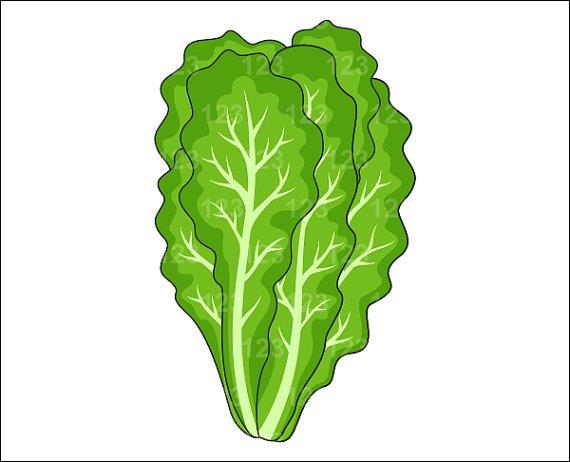Doctors Restoring Vision to Those With Catastrophic Eye Injuries
August 30th, 2023 A new type of stem cell treatment appears to be a safe option for people with limbal stem cell deficiency, a condition that can lead to painful ulcers, clouding of the cornea and blindness.
A new type of stem cell treatment appears to be a safe option for people with limbal stem cell deficiency, a condition that can lead to painful ulcers, clouding of the cornea and blindness.
New Treatment for Limbal Stem Cell Deficiency
Chemical burns and accidents can lead to a condition called limbal stem cell deficiency. Overwearing contacts, multiple eye operations and inflammatory conditions can cause this as well.
The stem cells are from the limbus, a zone of tissue around the cornea that generates transparent cells that protect and heal the eye’s surface.
The new procedure known as cultivated autologous limbal epithelial cell, or CALEC, transplantation is considered safe. In a Phase 1 trial, four patients who had chemical burns in one eye underwent CALEC transplants.
That only one eye is injured is important for the procedure. It involves removing stem cells from the patient’s healthy eye, cultivating them in the laboratory for two or three weeks and then transplanting them into the damaged eye. Once they have been transplanted, it takes time for the cells to grow, so researchers followed the patients for a year.
The results were published in “Science Advances.”
What is Limbal Stem Cell Deficiency?
Limbal stem cell deficiency is a condition that results from failure in limbal cells to properly repair and regenerate the surface of the cornea. This can lead to thinning, painful ulceration, opacity in the cornea, and eventually, possibly blindness.
Causes of the condition range from the following:
- Chemical and thermal burns
- Chemotherapy
- Ocular surgery
- Radiation
- Toxins
- Trauma
Limbal stem cell deficiency is one of the main causes of corneal blindness, which affects six million people worldwide.
What IAA has to Say
Insurance Administrator of America is here to keep you up to date on the world of health. Stay tuned to IAA’s blog to learn more.
Vitamin K Could Help With Lung Health
August 23rd, 2023 A new study suggests that people who have low levels of vitamin K also have less healthy lungs. They are more likely to report having asthma, COPD and wheezing. Vitamin K (found in leafy green vegetables) may boost lung health.
A new study suggests that people who have low levels of vitamin K also have less healthy lungs. They are more likely to report having asthma, COPD and wheezing. Vitamin K (found in leafy green vegetables) may boost lung health.
New Study on Vitamin K
Researchers recruited more than 4,000 participants, ages 24 to 77.
Study participants underwent lung function testing, which measures the amount of air a person can breathe out in one second (forced expiratory volume or FEV1) and the total volume of air they can breathe in one forced breath (forced vital capacity or FVC).
Participants also gave blood samples and answered questionnaires on their health and lifestyle. The blood tests included a marker of low levels of vitamin K in the blood.
People with markers of low vitamin K levels had lower FEV1 and lower FVC on average.
The study was published in “ERJ Open Research.”
Vitamin K and Your Body
You typically get enough vitamin K through food, occurring mainly in plant-based foods.
Vitamin K plays a role in:
- Blood clotting: Vitamin K assists with the blood clotting process. It makes four of the 13 proteins needed for blood clotting. Blood clots stop your injuries or wounds from bleeding so they can heal.
- Bone health: Vitamin K strengthens bones. It does this by helping make osteocalcin, which helps prevent low bone density.
What IAA has to Say
Insurance Administrator of America is here to keep you informed in the world of health. IAA wants you to think about adding some green to that dinner plate!
New Brain Stimulation Could Help With ADHD
August 16th, 2023
Brain Stimulation and ADHD
The new technology called transcranial random noise stimulation (tRNS) involves placing two electrodes on the brain where they emit a mild, painless electrical current.
The study included 23 kids ages six to 12 with ADHD who were not taking medication to control their symptoms. Half of the children underwent brain stimulation for 10 days while playing cognitive video games. The other half received “sham” stimulation while playing video games.
Fifty-five percent of children who received active brain stimulation showed improvements in ADHD symptoms based on a standard scale and as reported by their parents. By contrast, only 17 percent of kids in the sham group showed such improvement, the study found.
These improvements were maintained three weeks after treatment ended. Furthermore, changes in the children’s brain electrical activity patterns continued even after three weeks, the researchers reported.
The study was published in the journal “Translational Psychiatry.”
Signs of ADHD
ADHD affects about 3.3 million children, according to the Children and Adults with Attention-Deficit/Hyperactivity Disorder (CHADD).
Kids with ADHD can show signs in any or all these areas:
- Hyperactive: Kids who are hyperactive are fidgety, restless and easily bored.
- Impulsive: Kids who are impulsive act too quickly before thinking.
- Inattentive: Kids who are inattentive have trouble focusing their attention, concentrating and staying on task.
It is normal for young children to be restless, distracted, impatient, or impulsive. These things don’t always mean a child has ADHD. When these things continue and begin to cause problems at school, home and with friends, it may be ADHD.
What IAA has to Say
Insurance Administrator of America is here to keep you up to date on the world of health. Stay tuned to IAA’s blog for more health topics!
New Post Partum Pill Could be a Lifesaver for Women
August 9th, 2023 The medication given as a daily pill over the course of two weeks is in clinical development.
The medication given as a daily pill over the course of two weeks is in clinical development.
New Study
The study of 196 women with severe post-partum depression found that those who took a daily 50-milligram dose of the medication in pill form for 14 days showed significant improvement in depression symptoms. The improvements were still reported 28 and 45 days later, according to the study.
Among the women who actually received the pill (not the placebo), researchers noticed rapid responses to the treatment as early as day three.
The day after the women completed the 14 day treatment course, the researchers found that 57 percent reported a 50 percent or higher improvement in their symptoms, compared to 38% of those on a placebo.
As researchers continued to follow the women through 45 days, 61.9 percent of participants who received the medication (compared with 54.1 percent of those taking a placebo) reported a 50 percent or higher improvement in their symptoms.
The women were between the ages of 18 and 45.
The results were published in the “American Journal of Psychiatry.”
Symptoms of Post Partum Depression
Post-partum depression is a type of depression that happens after having a baby. It affects up to 15 percent of people.
Symptoms of post-partum depression can include:
- Change in appetite or not eating
- Crying for no reason or excessively
- Difficulty thinking or focusing
- Feeling sad, worthless, hopeless, or guilty
- Loss of energy or motivation
- Loss of interest or hobbies
- Trouble sleeping or wanting to sleep all the time
- Worrying excessively or feeling on edge
One in eight women experience symptoms of post-partum depression.
What IAA has to Say
Insurance Administrator of America is here to keep you up to date on the world of health. Remember, with IAA one call does it all.
New Technique Could Help Those With Compulsive Picking
August 2nd, 2023 A new, simple technique could help those who pick their skin, according to a new study.
A new, simple technique could help those who pick their skin, according to a new study.
New Technique for Unhealthy Repetitive Behaviors
Body-focused repetitive behaviors-compulsively pulling or picking at your hair or skin, unable to stop yourself even if the behavior leads to scabs, scars or bald spots—affects about five percent of people worldwide, according to the TLC Foundation for Body-Focused Repetitive Behaviors.
Research found that an approach called “habit replacement” may help reduce these behaviors. The new technique involves gently rubbing the fingertips, palm or back of the arm, at least twice a day.
Fifty-three percent of the people in the study said they had some improvement compared with around 20 percent of people in a control group.
The Study
In a six-week study, the research team looked at 268 people who had trichotillomania (plucking hair out in response to stress or to self-soothe) or those who repeatedly bite their nails or inside of their cheek.
Volunteers were split into two groups. One group was given a manual and a video that showed them how to form the new, less harmful, habit, by gently rubbing their fingertips, palm or arm any time they felt the urge to bite their nails or engage in harmful behavior. They were also instructed to practice the new habit when they were not feeling the urge to pick as well.
People in the control group were told they were put on a waitlist, and only received habit replacement therapy after the study was concluded.
The research was published in “JAMA Dermatology.”
What IAA has to Say
Insurance Administrator of America wants you to know what is happening in the world of health. IAA is here to keep you up to date!
